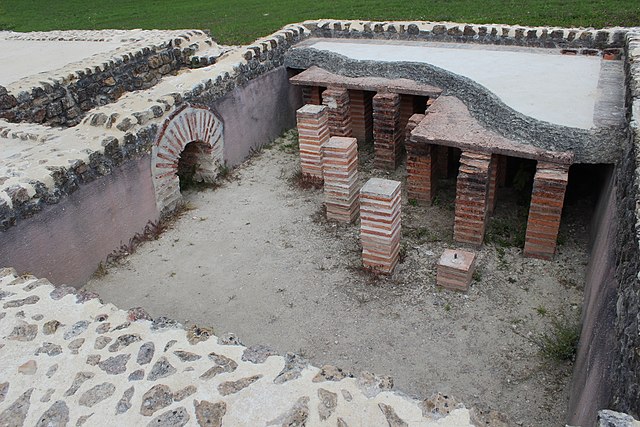A hypocaust is a system of central heating in a building that produces and circulates hot air below the floor of a room, and may also warm the walls with a series of pipes through which the hot air passes. This air can warm the upper floors as well. The word derives from the Ancient Greek hypo meaning "under" and caust-, meaning "burnt". The earliest reference to such a system suggests that the Temple of Ephesus in 350 BC was heated in this manner, although Vitruvius attributes its invention to Sergius Orata in c. 80 BC. Its invention improved the hygiene and living conditions of citizens, and was a forerunner of modern central heating.
Hypocaust under the floor in a Roman villa in Vieux-la-Romaine, near Caen, France
Ruins of the hypocaust under the floor of a Roman villa at La Olmeda, Province of Palencia (Castile and León, Spain).
Caldarium from the Roman Baths at Bath, in Britain. The floor has been removed to reveal the empty spaces through which the hot air would flow.
Hypocaust at Chesters Roman Fort
A central heating system provides warmth to a number of spaces within a building from one main source of heat. It is a component of heating, ventilation, and air conditioning systems, which can both cool and warm interior spaces.
A condensing boiler
Hot water central heating unit, using wood as fuel
Ruins of the hypocaust under the floor of a Roman villa at La Olmeda, Province of Palencia (Castile and León, Spain).
Sylvester's warm-air stove, 1819







